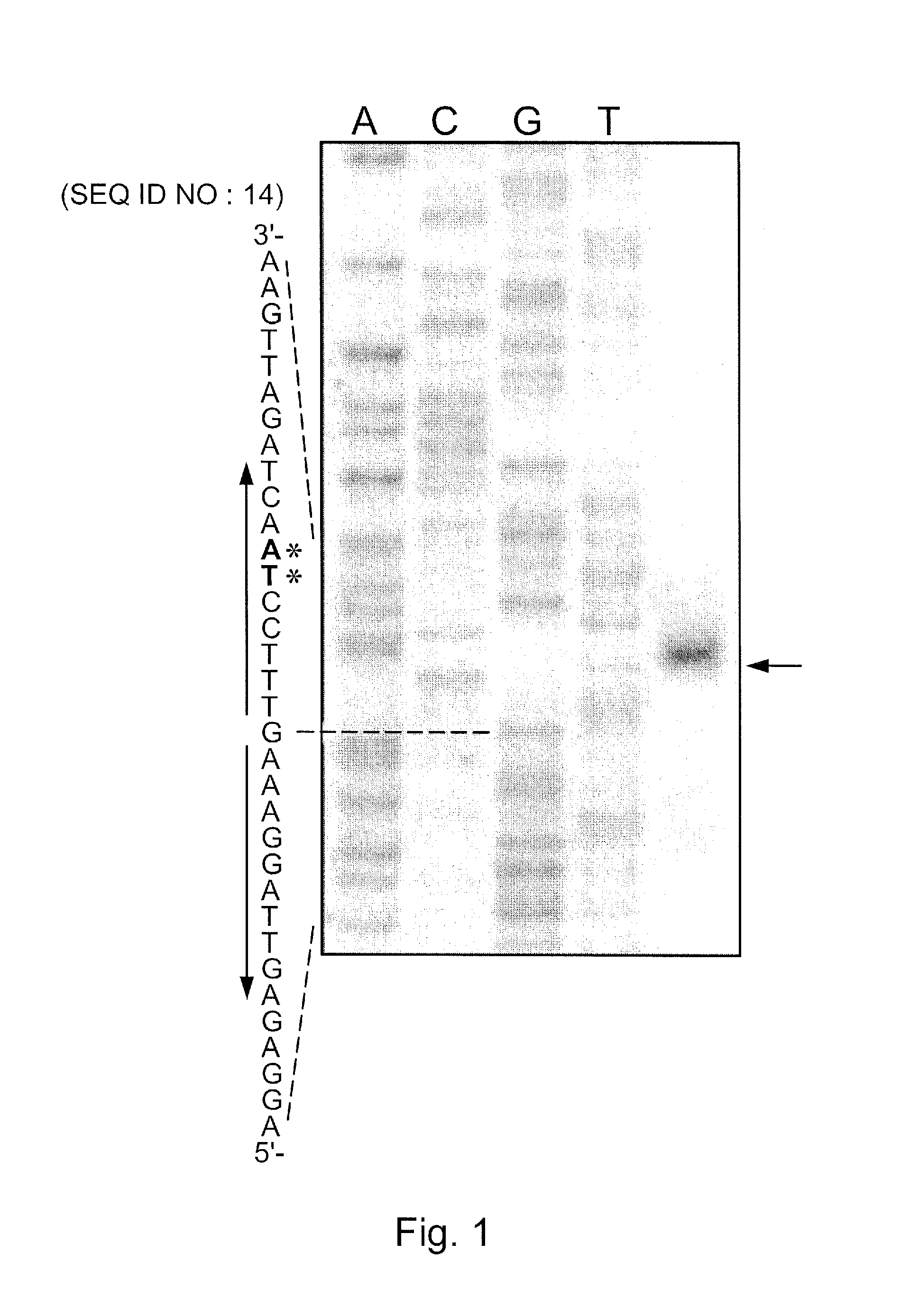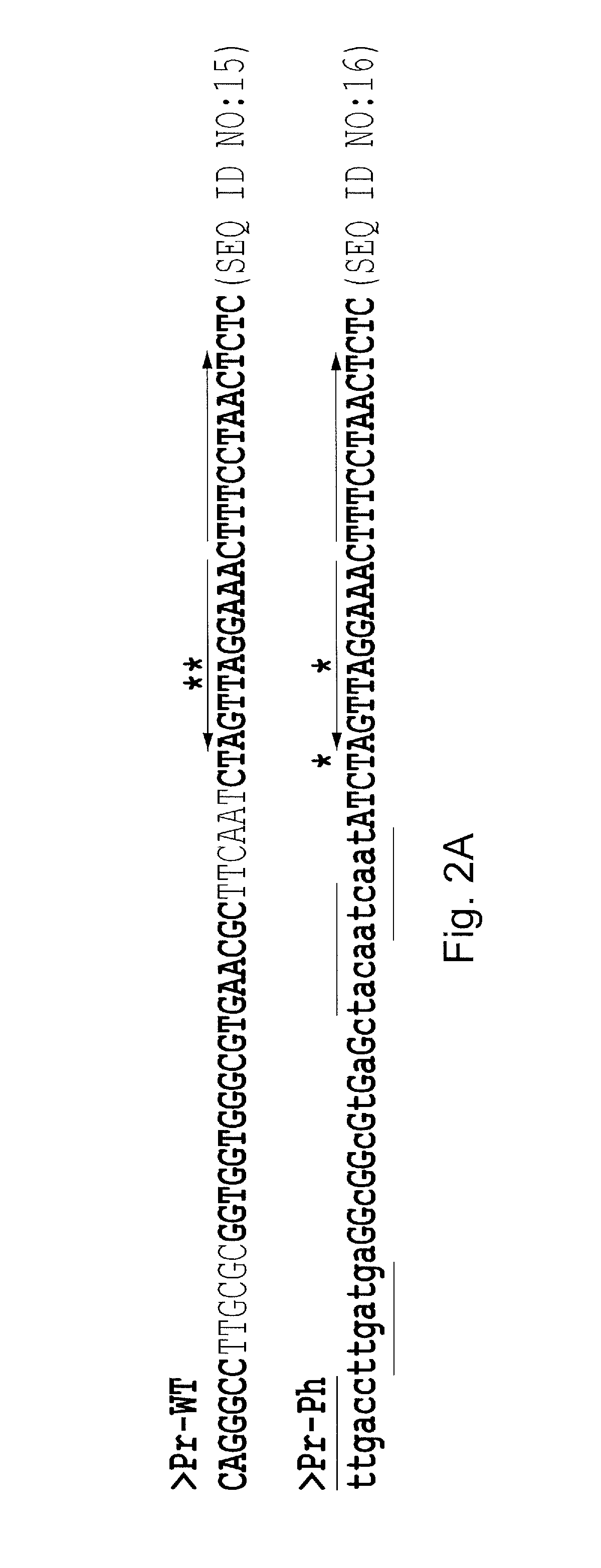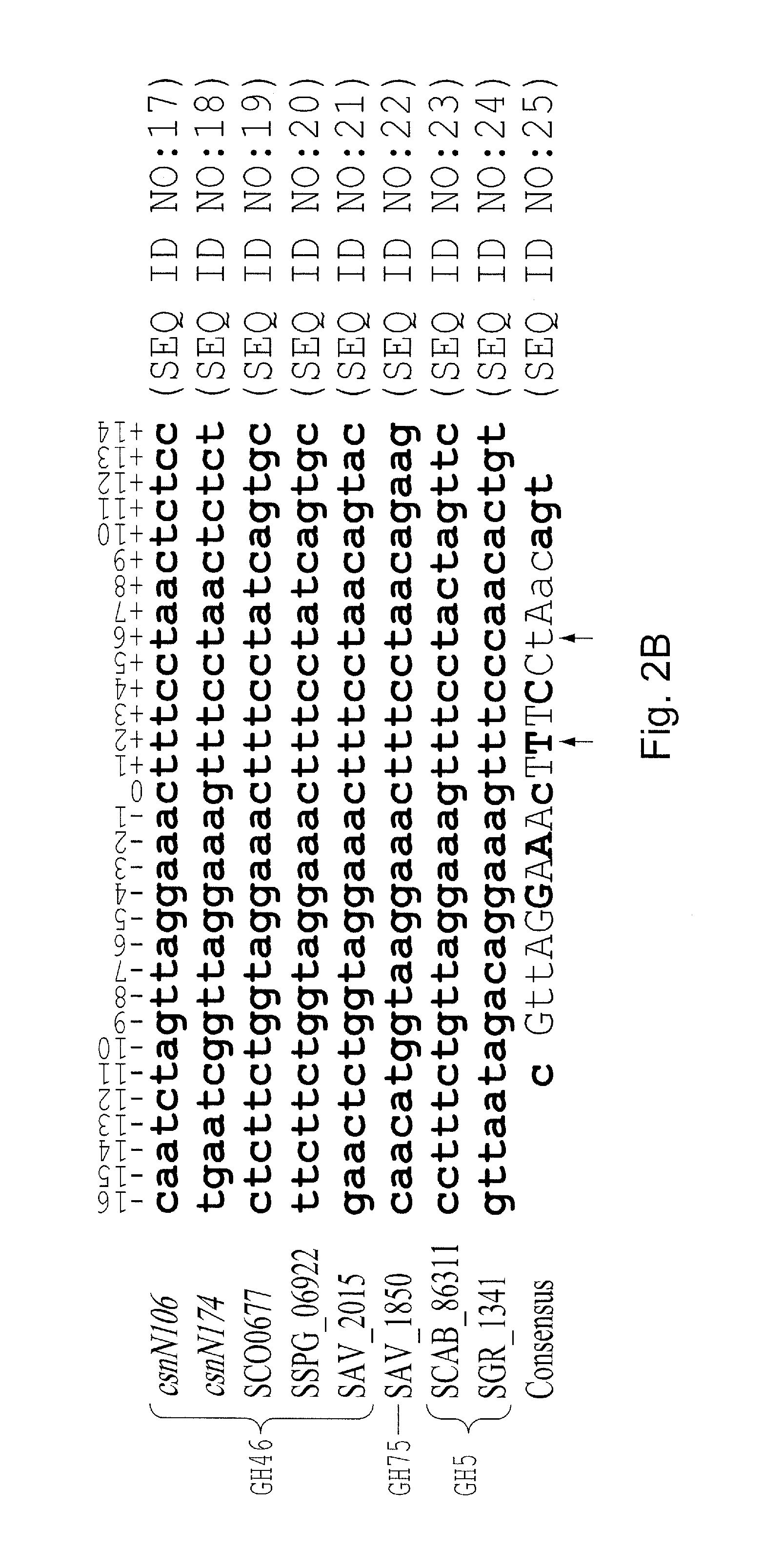Csnr-deficient actinobacteria for the production of an enzyme having chitosanase activity
a technology of chitosanase and chitosanase gene, which is applied in the field of cells for the production of chitosanase, can solve the problems of limited follow-up studies, limited knowledge about and few studies dedicated to the regulation of chitosanase gene expression in the native population. , to achieve the effect of reducing the molecular weight of a
- Summary
- Abstract
- Description
- Claims
- Application Information
AI Technical Summary
Benefits of technology
Problems solved by technology
Method used
Image
Examples
example i
CSNR-K.-O. Cells for the Expression of Exogenous Chitosanase
[0077]In this example, a study on the genetic regulation of a heterologous chitosanase gene (csnN106) in Streptomyces lividans is provided. Two S. lividans strains were used for induction experiments: the wild type strain and its mutant (ΔcsnR), harbouring an in-frame deletion of the csnR gene, encoding a negative transcriptional regulator. Comparison of chitosanase levels in various media indicated that CsnR regulates negatively the expression of the heterologous chitosanase gene csnN106. Using the ΔcsnR host and a mutated csnN106 gene with a modified transcription operator, substantial levels of chitosanase could be produced in the absence of chitosan, using inexpensive medium components. Furthermore, chitosanase production was of higher quality as lower levels of extracellular protease and protein contaminants were observed. This new chitosanase production system is of interest for biotechnology as only common media comp...
example ii
CSNR-K.-O. Cells for the Expression of Endogenous Chitosanase
[0097]A palindromic sequence is present in the intergenic region preceding the chitosanase gene csnA (SSPG—06922) of Streptomyces lividans TK24. This sequence was also found in front of putative chitosanase genes in several other actinomycetes' genomes and upstream genes encoding putative transcriptional regulators of the ROK family, including csnR(SSPG—04872) in S. lividans. The latter was examined as a possible transcriptional regulator (CsnR) of chitosanase gene expression. In vitro, purified CsnR bound strongly to the palindromic sequences of the csnA and csnR genes (equilibrium dissociation constant [KD]=0.032 and 0.040 nM, respectively). Binding was impaired in the presence of chitosan oligosaccharides and d-glucosamine, and chitosan dimer was found to be the best effector, as determined by an equilibrium competition experiment and 50% inhibitory concentration (IC50) determination, while glucose, N-acetyl-glucosamine...
example iii
Optimization of Chitosanase Production
[0125]Spores of S. lividans ΔcsnR strain harboring a heterologous chitosanase gene (as described in Example I) were inoculated into tryptic soy broth (ratio of 2×109 spores per 100 ml of broth) and incubated for 64 h at 30° C. with shaking (250 rpm) to obtain a dense pre-culture. A small volume (50 ml) of this pre-culture was centrifuged (10 min at 3000×g) in order to measure the pellet volume equivalents. This dense pre-culture was used to inoculate directly the chitosanase production medium in a ratio of four ml of pellet volume equivalents per 100 ml of chitosanase production medium. This culture was incubated (30° C., 300 rpm) for further 72-96 h. Chitosanase and protease activities as well as total protein concentration were determined (as described in Example I) in culture supernatant.
[0126]The chitosanase production medium contained, for 1 000 ml, 20 g of malt extract, 4 g KH2PO4, 22 g K2HPO4, 5.6 g (NH4)2SO4 and distilled H2O. The pH was...
PUM
| Property | Measurement | Unit |
|---|---|---|
| Molecular weight | aaaaa | aaaaa |
Abstract
Description
Claims
Application Information
 Login to View More
Login to View More - R&D
- Intellectual Property
- Life Sciences
- Materials
- Tech Scout
- Unparalleled Data Quality
- Higher Quality Content
- 60% Fewer Hallucinations
Browse by: Latest US Patents, China's latest patents, Technical Efficacy Thesaurus, Application Domain, Technology Topic, Popular Technical Reports.
© 2025 PatSnap. All rights reserved.Legal|Privacy policy|Modern Slavery Act Transparency Statement|Sitemap|About US| Contact US: help@patsnap.com



